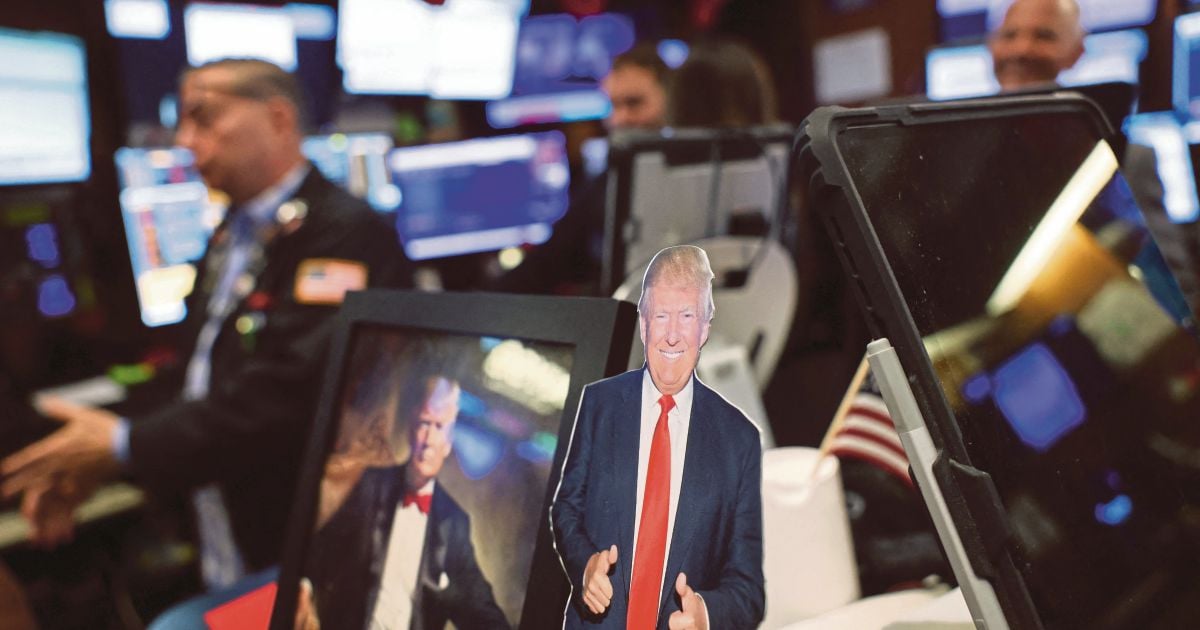UNITED States President Donald Trump has faced little opposition in his drive to rip up the global economic rule book, whether from his fellow Republicans, political opponents or institutional guard rails.
The only exception has been “the market”. But now even investors are holding their fire, enabling more risk to build up in the financial system.
Wall Street’s reaction to Trump‘s “Liberation Day” tariffs on April 2 was so ferocious that the president did something he had rarely done: he backed down.
Trillions of dollars were wiped off the value of US stocks amid a 10 per cent nosedive from April 3-4. The only two-day selloffs since the 1930s that were bigger occurred during World War 2, “Black Monday” in 1987, the Global Financial Crisis in 2008, and the Covid-19 pandemic in 2020.
The stock market bottomed out on April 7 after Trump paused most of his country-specific tariffs. Wall Street has not looked back since, with the S&P 500 rebounding 35 per cent to a new all-time high.
This episode suggests that “the market” is one of the few true checks on Trump’s apparent pursuit to re-shape the US — and indeed the world — economy.
The only problem is that the president has continued to pursue unorthodox policies in recent months — including challenging the independence of the Federal Reserve (Fed), firing statisticians and slapping tariffs on countries for non-economic reasons — and investors have failed to tap the brakes.
The so-called “Trump put” — the idea that the president won’t let the markets fall too far — is essentially a funhouse mirror version of the famous “Fed put”, the long-held belief that, in the event of a crisis, the central bank will step in to restore stability.
Trump seemingly did just that in April, but it was to clean up a mess of his own making. And one could argue that it was actually investors who came to the economy’s rescue by putting pressure on the president to reconsider policies considered ill-advised by most economists.
Trump and markets are, therefore, now in a curious dance.
Investors appear to believe that markets can ultimately stop Trump from pushing the envelope too far on tariffs or other policies.
But as a result, investors are not over-reacting — or reacting at all — to the latest controversies around the Bureau of Labour Statistics firing, his attacks on Fed chair Jerome Powell, his pressure on Intel’s chief executive officer to resign, or the outsized tariffs slapped on Brazil and India.
This, in turn, has powered the markets to new record highs, emboldening Trump to push the envelope even further.
So even though the market has the power to rein in the president’s economic policy excesses, it’s not using it. Why hasn’t the market pushed back?
As the cliche goes, equity investors are paid to be optimistic. It’s in their interest to keep the train hurtling along provided there aren’t any immediate obstacles to derail it.
There are, of course, a few pretty large hurdles on the horizon for the US economy, including the highest tariffs since the 1930s and some of the biggest budget deficits since World War 2 outside of crisis periods.
But until these or other issues present an immediate economic threat, markets can choose to ignore them.
By under-reacting to Trump’s unorthodox policies, markets may be not only delaying the day of reckoning but amplifying the potential impact.
Why? Genuine economic and geopolitical paradigm shifts are underway, and investors are not pricing in the attendant risk. Nobody knows what the ultimate impact of these shifts will be, but we do know that with greater uncertainty comes greater downside risk.
Yet equity volatility is currently the lowest it has been this year, and even in the bond market — not known for its optimism — volatility is the lowest in 3½ years, while US corporate bond spreads are the tightest since 1998.
Ultimately, the market is unlikely to call Trump’s bluff until something truly unexpected or extreme hits. In the meantime, investors can justify this nonchalance by saying that corporate earnings growth is solid, artificial intelligence enthusiasm is high, economic growth remains decent, unemployment is low and consumers are still spending.
The writer is from Reuters
© New Straits Times Press (M) Bhd






